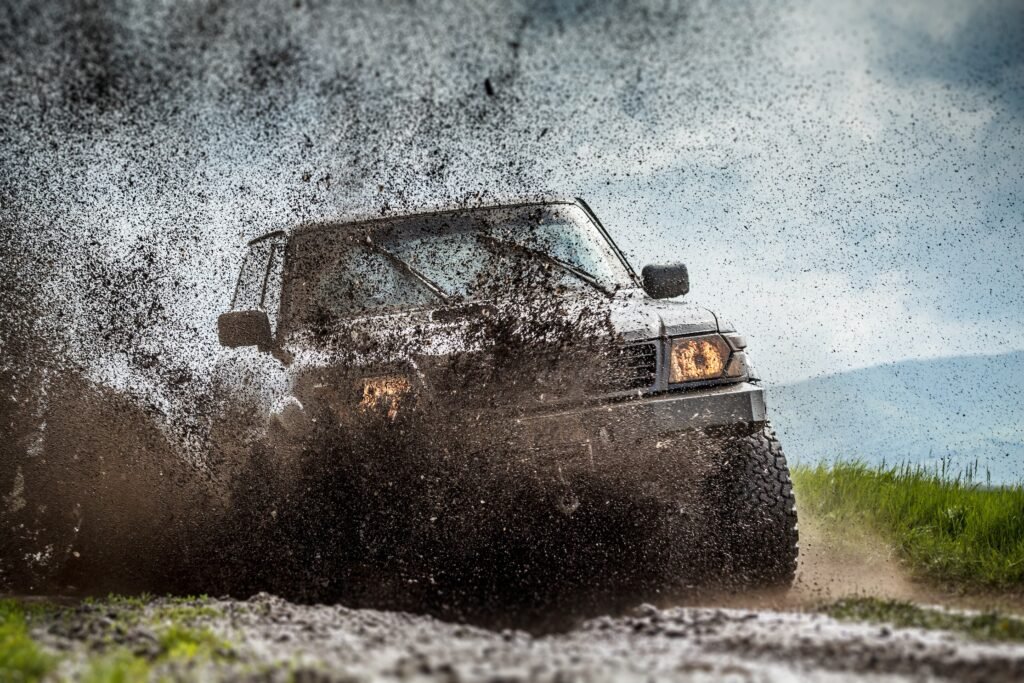Autumn in northern Utah invites weekend warriors to explore rugged trails, mountain passes, and leaf-lined backroads. While the scenery around our region is breathtaking, the terrain can be punishing on your vehicle’s suspension system. Whether you are climbing rocky inclines near Antelope Island or traversing forested trails in the Wasatch Range, your shocks, alignment geometry, and undercarriage components are absorbing every impact and vibration.
In this month’s blog post, we examine how fall excursions affect your vehicle’s suspension integrity and what technical signs to monitor.
Shocks and Struts: The First Line of Damping Defense
Shock absorbers and struts are hydraulic devices engineered to control spring oscillation and maintain consistent tire-to-road contact. When subjected to off-road terrain, washboard surfaces, and uneven campground access roads, these components experience accelerated wear. Deteriorated shocks can lead to increased rebound, reduced damping force, and compromised braking efficiency.
Technical indicators include:
- excessive vertical motion,
- nose-diving during deceleration,
- and scalloped tire tread wear.
If your vehicle exhibits instability or delayed response over bumps, it may be time to inspect or replace the dampers.
Alignment: Geometry and Tire Longevity
Wheel alignment refers to the precise angles of camber, caster, and toe that influence steering and tire wear. After navigating pothole-ridden forest roads or uneven trail surfaces, these angles can shift due to impact stress on suspension arms and tie rods. Misalignment can result in asymmetric tire wear, reduced fuel economy, and unpredictable steering behavior.
Symptoms include:
- pulling to one side,
- steering wheel vibration,
- and off-center tracking.
A post-adventure alignment check using computerized equipment ensures your vehicle maintains optimal handling and safety margins.
Undercarriage: Structural Vulnerabilities and Corrosion Risks
The undercarriage houses critical components such as control arms, sway bars, brake lines, and exhaust hangers. Gravel, mud, and rocky terrain can cause abrasions, dents, and exposure to corrosive materials. Skid plates may deflect some impact, but unprotected areas remain vulnerable.
Inspect for signs of rust, fluid seepage, or loose hardware. A visual inspection combined with a lift-based evaluation can reveal hidden damage before it escalates into mechanical failure.
Essential Maintenance Protocols
To minimize suspension-related issues during fall excursions, follow these best practices:
- Inspect shocks and struts every 12,000 miles or after aggressive off-road use
- Schedule a wheel alignment check after trail riding or if symptoms emerge
- Wash the undercarriage to remove mud, salt, and debris that accelerate corrosion
- Monitor tire pressure and tread depth before and after each trip
- Listen for clunks, squeaks, or changes in handling—these are early warning signs
Clearfield’s fall terrain is stunning but mechanically demanding. By staying proactive with suspension care, you can enjoy every weekend adventure without compromising your vehicle’s performance, safety, or structural integrity. Contact the service professionals at Fowers Tire and Auto Care today to schedule an appointment for your vehicle’s suspension system.

